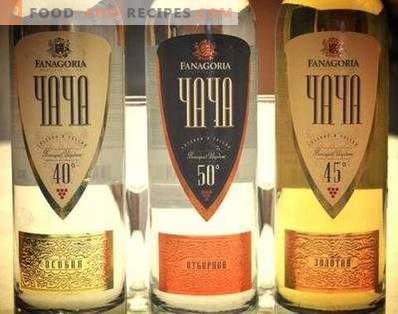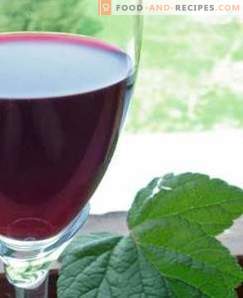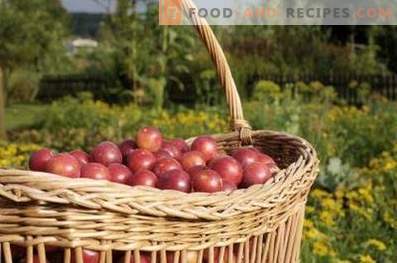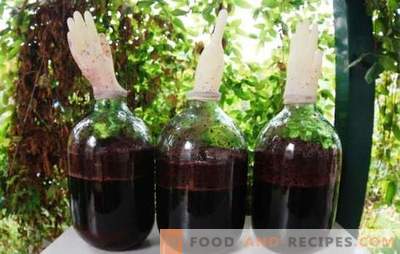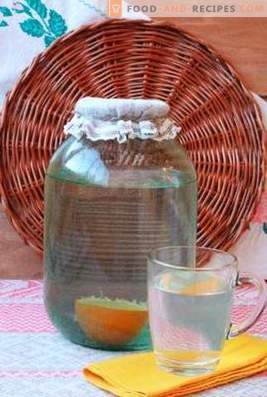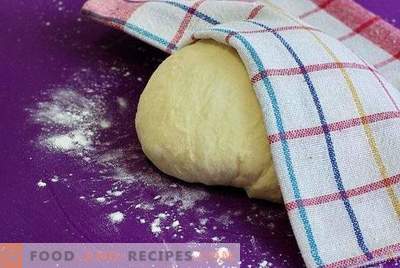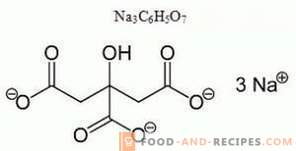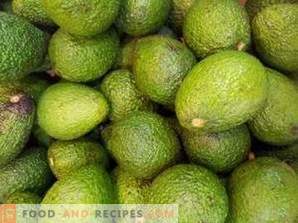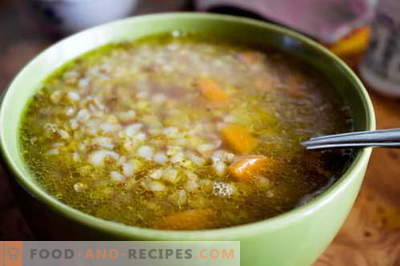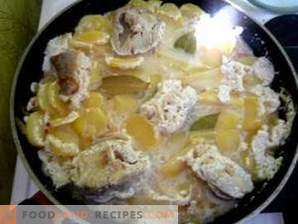
Chacha is a strong alcoholic drink, which is made by the method of double distillation from grapes in Georgia and Abkhazia. Unlike ordinary moonshine, chacha has the best organoleptic characteristics and is even considered useful if used in small quantities. Traveling to the above countries, tourists can buy a legendary drink, but local residents themselves are convinced that chacha should be made from grapes at home. Knowing the production technology of chacha at home and the recipe, you can try chacha without visiting Georgia, that is, by welding it yourself.
Technology Features
Each Georgian and Abkhazian family has its own recipe for making chacha from grapes. Nevertheless, the technology of its preparation remains unchanged.
- For the production of chacha, substandard grapes (too small, damaged, immature), which cannot be used to make wine, are most often consumed. The marc remaining after cooking wine is used more often. First, they are still no longer useful for anything. Secondly, they remain after a truly high-quality grapes, intended for the production of noble wines, which means that the chacha of them will turn out the best quality.
- When used for cooking chacha oil cake, it is desirable that it is not completely wrung out. If less than 25 percent of the juice is left in it, the chacha from it will not taste as good as the juicy grapes.
- Traditionally, neither sugar nor yeast is used to make chacha. However, in Georgia and Abkhazia grapes have a higher sugar content than in other regions of Russia. Therefore, sugar is still added when cooking chacha at home is necessary. But in the case of yeast, the situation is different. If the grapes were not washed and he did not fall under the rain before harvesting, then bacteria live on the surface of the berries that can cause fermentation. You just need to be patient and wait until the time comes to distill the grape mash. If it is possible to proceed with distillation with cultural yeast within two weeks, then relying entirely on the wild, this moment will have to wait at least a month. But without the use of cultural yeast, chacha does not have an unpleasant smell peculiar to moonshine. So if there is a desire to get a truly high-quality drink, it is better to be patient and wait.
- In order for the cake not to burn during the distillation process, the mash is filtered before this. It is better not to throw the cake itself, but to collect it in gauze and hang it inside the distillation cube. Then chacha is filled with its aroma - it will be pleasant to drink such a drink.
- Opinions on how strong chacha should be strong, diverge. Some believe that it should not be stronger than 45 degrees, others insist that the strength of this drink should be 70 degrees. However, in the homeland of this wonderful drink, its fortress usually ranges between 55 and 60 degrees, so it is better to focus on these numbers.
- Distill chacha twice. For the first time, it makes no sense to divide it into fractions, but when re-distilled, the “tails” and “heads” must be “cut off”. In other words, about 8-12 percent of the liquid distilled first is poured. Just pour out the last part, stopping the distillation, when the liquid emerging from the coil becomes no stronger than 40 degrees. Later the fortress of the resulting drink is adjusted to the standard, diluting the chacha with clean, softened water.
- Immediately after receiving, chacha is usually not drunk, but insisted for two weeks. This is best done in an oak barrel, but if it is not available on the farm, you can do it with regular bottles.
- In conclusion, it is advisable to clear the chacha so that its taste, color and aroma become even better. To do this, you can pour into the bottle with her a little pine nuts and insist for two weeks, then remove the nuts and discard. Another option is to filter through gauze filled with activated carbon.
Otherwise, the cooking technology depends on the recipe, although it does not depend on it significantly.
Chacha recipe from grapes without yeast
The composition (3-4, 5 l):
- Isabella grapes (it can be immature) - 7, 5 kg;
- pure softened water (5 l - at the first stage, 5-7, 5 l - before the second distillation and 1-1, 5 l - to bring the drink to the desired strength);
- sugar - 4 kg.
Method of preparation:
- Grapes, along with the crests, fold into a large vat or basin. Carefully knead it so that not a single berry is left. In no case should one wash the berries before this, otherwise fermentation will not take place, since it must be provided by live yeasts that inhabit the surface of the grapes.
- Pour in sugar, pour in purified and slightly warmed up water if necessary (its optimum temperature is 26-28 degrees), stir.
- Place everything in a large container (a glass bottle with a volume of 20-30 liters is ideal). From above establish a hydrolock. It can be replaced with a conventional latex glove, puncturing a finger in it.
- Place the bottle in a warm room, where the temperature is not less than 22-24 degrees (but not higher than 28 degrees). A day later, open the bottle and mix its contents.
- Wait for the fermentation to complete. It will be clearly visible on the water seal or glove: the water seal will stop blowing bubbles, the glove will deflate and fall.
- Press the pulp. Braga strain and pour into the still. Surpass, not divided into fractions. The only caveat: after the strength of the outgoing drink drops to 20 degrees, it is better to stop the distillation.
- Measure the amount of fluid produced. Most likely its volume will be 5-7 liters. Dilute it with the same amount of pure water.
- Distill again, this time dividing into fractions and stopping the distillation when the output liquid reaches 30-40 degrees.
- Measure the strength of the resulting chacha and dilute it to 55-60 degrees with clean water.
If everything is done correctly, then from 3 to 4, 5 liters of chacha should be obtained from the initial amount of ingredients indicated in the recipe. The exact amount depends on various parameters, including the sugar content of the grapes themselves.
Chacha with Yeast Recipe
Composition (for 2, 5-3, 5 l):
- grape cake (not processed) - 5 l;
- water - 15 l;
- sugar - 2, 5 kg;
- yeast - 50 g dry (better than alcohol) or 0, 25 kg pressed.
Method of preparation:
- Grape cake obtained from grapes, place in a container where it will be fermented. If the cake is used recycled, that is, remaining after cooking wine, it must be taken in 1, 5-2 times more than indicated in the recipe. In any case, you will need a bottle with a capacity of at least 30 liters.
- Pour sugar and yeast into the fermentation tank.
- Heat the water slightly so that its temperature is 26-28 degrees. Pour grape pomace with it.
- Mix well the contents of the bottle and place a water seal on it or attach a rubber glove to the neck so that it fits tightly. In the finger glove with a needle, make a small hole.
- Put the bottle in a warm room. Mix the contents once a day.
- After 10-15 days, the fermentation should stop. The contents of the bottle will be bitter.
- Drain the liquid from the bottle, wring out the pulp through folded gauze in several layers.
- Strain the resulting liquid and transfer it to a still cube. Put on the fire and distill as usual moonshine. When the strength of the liquid being distilled drops to 30 degrees, stop the distillation. Dilute the resulting liquid with clean water so that its strength will remain at 20 degrees.
- Repeat the distillation, cutting off the “tails” and “head”. The first portion of at least 10 percent should be poured out, as it may contain acetone and other harmful substances. The last 10 percent are also poured, as they contain a lot of fusel oils, spoiling the taste of the finished drink.
- Dissolve the vat obtained after the second distillation with water until the desired strength is obtained. Bottle and leave for another 2 weeks to allow the chacha to settle. Before that, it can be filtered through potassium permanganate or activated carbon, then chacha will be cleaner and more pleasant to the taste.
The output of chacha will depend on the sugar content of the grapes and other parameters, therefore the amount of the beverage produced can be determined only approximately. Usually, at least 2.5 liters of chacha usually come out of the amount of ingredients indicated in the recipe.
You can serve chacha to both salty and sweet dishes. Often they drink it instead of an aperitif.

